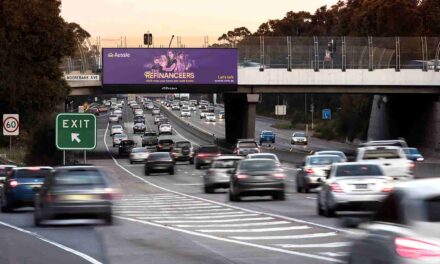99% of Singapore marketers acknowledge their business is currently facing growth challenges.
HubSpot, the customer relationship management (CRM) platform for scaling companies, and LinkedIn, the world’s largest professional network and leading advertising partner for brands, announced on 1 November the findings of a joint research report, conducted by YouGov, on how marketers in Singapore can continue to be successful while working with regional or global headquarters (HQs), current areas of focus, ways of working and adopting strategies for local nuances.
Marketing remains critical to continued business growth
According to the report, amidst the continued economic uncertainty, nearly all (99%) of marketers in Singapore say that their business is currently facing challenges. For marketing leaders, the top priorities at the moment are contributing to the growth of the business through initiatives to increase mindshare and brand affinity (41%), followed by delivering strategies and results within budgets (32%), driving better returns on investment (31%) and increasing focus on building awareness (31%).
“While the world was beginning to think the economic impact of the pandemic is slowly receding into the rearview mirror, businesses are now facing the discernible impact of weakened demand leading to slower business growth. This can have a profound influence on marketing budgets as well. There is a lot more scrutiny and a need to do more with less. But this is also the ideal time for marketers to showcase the measurable value and impact of marketing, and how it helps brands reinforce their continued commitment and focus on their customers. If brands get this right, they can build unwavering customer loyalty which will lead to sustained business growth in the long run”, said Kat Warboys, Director, APAC, HubSpot.
“Today’s marketers do a great job of juggling multiple responsibilities, and it’s certainly not easy. They are tasked with aligning marketing efforts to drive business growth. However, often, they are also directed to focus on short-term goals, and increasingly asked to prove return on marketing spend. Despite the challenges, our research shows Singapore marketers are keen to increase mindshare, affinity and brand awareness – the key ingredients that contribute to brand growth. We know a full-funnel approach will drive stronger business outcomes, but this focus also allows for marketers to invest in creativity.” said Sarah Tucker, Head of APAC Marketing, LinkedIn Marketing Solutions – Enterprise.
Headwinds can breed opportunities and better creativity
In spite of the current economic headwinds, there are opportunities for marketers in Singapore to get their arms around potential tailwinds as well. With key business priorities including increasing brand awareness and affinity, the main opportunity for business growth in the near future is in attracting customers with educational initiatives to help inspire loyalty/ trust (e.g. whitepapers, events/ workshops, content on tips/ tricks/ best practices etc.), according to nearly half of marketers in Singapore (44%). A third of the respondents (33%) also identified that new tools and tech are improving or will improve their operations.
With Singapore’s internet penetration rate currently standing at 92%, social media is identified as the most successful channel (38%) for the most effective communication with customers in the island nation, followed by online video marketing (36%) and other online communities (29%). Overall, nearly all (97%) of marketers claim to have success with online/ digital channels when communicating to customers, while seven in ten (72%) say the same for other/ offline channels.
“The ubiquitous rise of social media, digital platforms, and access to technology has levelled the playing field for businesses. It has enabled smaller brands to compete with the bigger brands in their industry, enabling them to engage customers and prospects at every stage of the relationship. The current challenges can also prove to be a springboard for the use of better technology, and more innovative marketing strategies”, said Warboys.
Another essential opportunity that emerged from the research findings includes expanding locally (35%) and globally (34%), as well as regionally within APAC (28%), with 69% of marketers identifying these market expansions as marketing opportunities.
These findings reaffirm that there are tailwinds for growth that can be leveraged by marketers including a concerted focus on educational initiatives to attract customers, harnessing the most optimal channels to engage them and continuing to build on market expansion strategies.
New ways of working are reframing the global vs. local marketing debate
Marketers say local requirements are kept in mind by HQ when making decisions, however, the majority (82%) agree they spend too much time educating HQ on Singaporean nuances and needs. In fact, nearly half (47%) of marketing decision-makers in Singapore are of the opinion that senior leaders in regional or global offices are often misaligned with local marketing teams. There is a lack of understanding of which channels are most effective in markets, where the areas of greatest impact are, and in some cases, there’s an assumption that a global approach will work the same way in every market.
Over a third (36%) of marketers agree it is critical to localise marketing messages, campaigns and activity to resonate with a local audience (e.g. language/ tone, diversity, humour), and this isn’t always well understood by global offices/HQs.
However, these marketers do recognise that the rise in remote working has helped improve collaboration between global HQ and regional offices (90%).
For marketing leaders operating in a company with an HQ outside of Singapore, the top channels and levers they identify as managed or developed by their HQ include brand marketing (66%), product marketing, PR & Comms (38%) and website management (36%). Channels and levers more likely to be developed and managed by marketers in Singapore include strategic partnerships (28%), performance-based marketing (26%) and chat and messaging (22%).
However, marketers in Singapore are keen to influence a lot more strategic marketing initiatives. The top channels and levers managed or developed by HQs that marketers believe should be managed more exclusively by their regional/ local teams are brand marketing (36%), sales enablement (28%) and product marketing (28%).
“The world has had to reconstruct traditional ways of working as a result of the pandemic, transitioning old working models to hybrid/remote work contexts. This shift, over the recent past, is potentially leading the charge to discard suboptimal marketing approaches across markets. Marketers in the regional or local offices are keen to tap into opportunities to lead strategic marketing instead of just executing on a global plan that was developed by HQ”, according to Warboys.
“For regional marketing teams, it comes as no surprise that there is a growing appetite to influence brand building and sales enablement. Marketers are the growth engine for their brands’ expansion into new territories. They understand and communicate local customer sentiment and cultural nuances, which directly feed into business acceleration strategies. This knowledge makes regional marketers hugely valuable as they can align global strategic priorities with market needs, to successfully execute marketing campaigns with a local twist,” said Tucker.


















